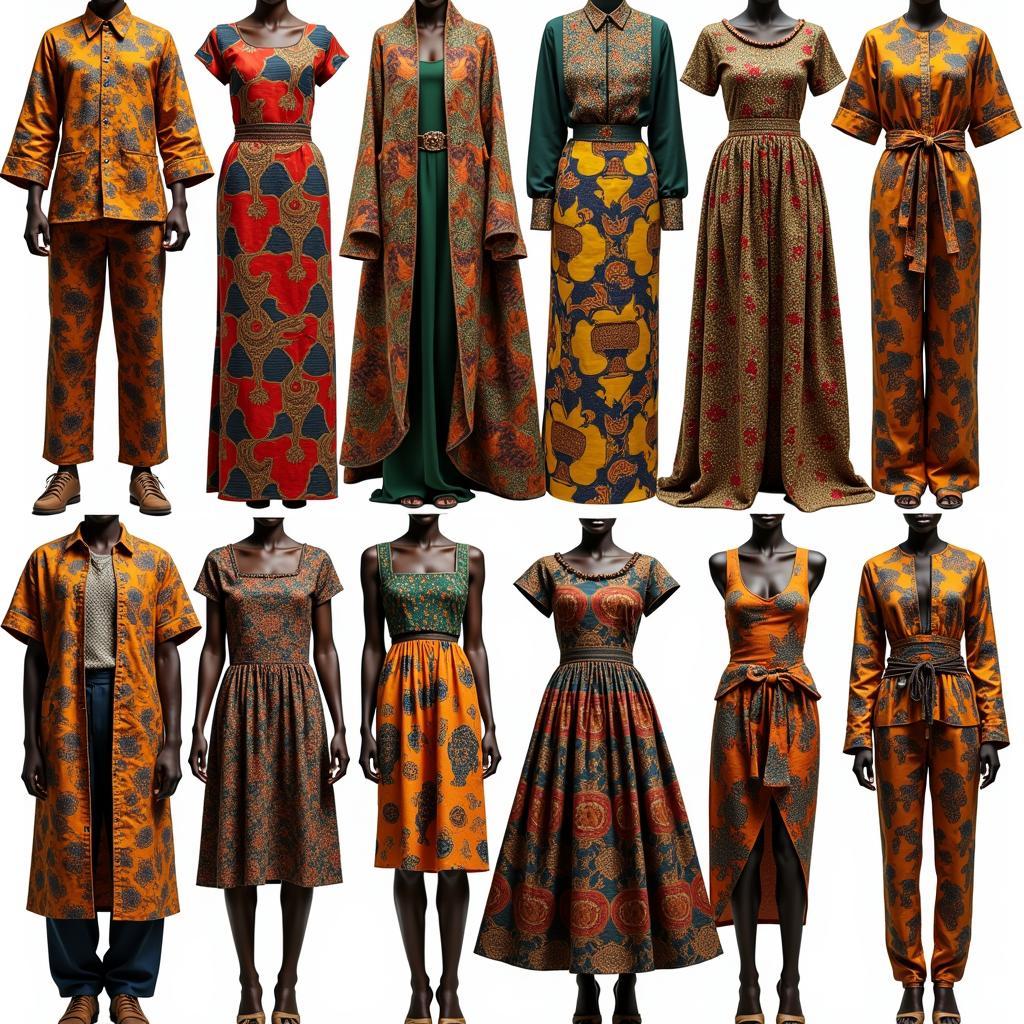Exploring the Vibrant World of African Dashiki and African Clothing
The vibrant and diverse world of African clothing, particularly the iconic African dashiki, tells a story of rich cultural heritage, artistic expression, and historical significance. African dashiki and African clothing are more than just garments; they are symbols of identity, pride, and a connection to a vibrant past. Let’s delve into the fascinating history and modern evolution of this unique attire.
The History and Significance of the African Dashiki
The dashiki, a loose-fitting, brightly colored garment, originated in West Africa. Initially worn by men, it has evolved to encompass various styles for both men and women. The word “dashiki” comes from the Yoruba word “danshiki,” referring to a loose-fitting tunic worn in the heat. The dashiki’s vibrant colors and intricate patterns often hold symbolic meaning, representing different tribes, regions, or social statuses. african culture dress styles
From Everyday Wear to a Symbol of Pride
While initially everyday wear, the African dashiki gained prominence during the Civil Rights Movement in the United States. It became a symbol of African pride, identity, and resistance against oppression. This historical context added another layer of significance to the garment, transforming it into a powerful statement of cultural affirmation.
A Kaleidoscope of Colors and Patterns in African Clothing
Beyond the dashiki, African clothing encompasses a vast array of styles, fabrics, and designs, each reflecting the unique traditions of different regions and ethnic groups. From the flowing boubous of West Africa to the intricate beadwork of the Maasai, African attire showcases a stunning diversity of artistic expression.  Different Styles of African Clothing
Different Styles of African Clothing
Understanding the Symbolism Behind the Designs
Many African textiles and patterns carry symbolic meaning, often representing ancestral stories, spiritual beliefs, or social status. For example, the Kente cloth of Ghana, woven with intricate patterns and vibrant colors, is often worn during important ceremonies and festivals, symbolizing royalty and prestige. african dresses for girls
The Modern Evolution of African Dashiki and African Clothing
Today, African dashiki and African clothing continue to evolve, blending traditional elements with contemporary fashion trends. Designers are incorporating African prints and fabrics into modern silhouettes, creating unique and stylish pieces that celebrate African heritage while embracing global fashion influences. african girl boy kids
African Dashiki on the Global Stage
The African dashiki has transcended its geographical origins and become a global fashion statement. From runways to red carpets, the dashiki’s vibrant presence highlights the growing appreciation for African culture and aesthetics worldwide.
“The dashiki is more than just a piece of clothing; it’s a wearable piece of art, a testament to the rich cultural heritage of Africa,” says Abena Serwaah, a Ghanaian fashion designer.
How is African clothing made?
Traditional African clothing is often handcrafted using techniques passed down through generations. Many garments feature intricate embroidery, beadwork, or hand-painted designs, reflecting the skilled artistry of African artisans.
“Each piece tells a story,” adds Adebayo Ojo, a Nigerian textile artist. “The patterns, the colors, the techniques – they all carry the echoes of our ancestors.”
The Future of African Fashion
The future of African fashion looks bright, with a growing number of designers and brands embracing African aesthetics and showcasing them to the world. This global recognition not only celebrates African creativity but also contributes to economic empowerment within African communities. african fabric store near me
In conclusion, African dashiki and African clothing represent a vibrant tapestry of cultural heritage, artistic expression, and historical significance. From the symbolic patterns to the evolving styles, African attire continues to captivate and inspire, offering a powerful connection to a rich and diverse continent. african attire pictures
FAQ:
- What is a dashiki?
- What are some common African clothing styles?
- What is the significance of Kente cloth?
- Where can I buy authentic African clothing?
- How can I incorporate African prints into my wardrobe?
- What are some popular African fabrics?
- How do I care for African clothing?
Need support? Contact us 24/7: Phone: +255768904061, Email: [email protected], or visit us at Mbarali DC Mawindi, Kangaga, Tanzania.

